
views
Washing Color-Treated Hair
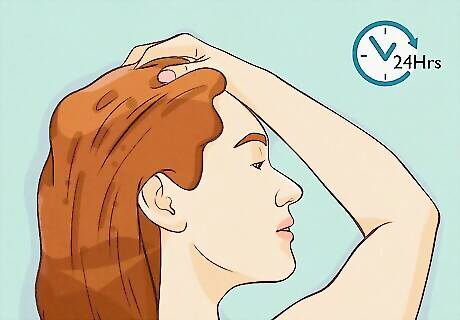
Wait to wash your hair. To keep your hair color looking fresh as long as possible, the dye needs to settle in your hair. Washing your hair too soon after you color it can rinse some of the dye out so your hair color fades more quickly. For the best results, avoid washing your hair for at least 24 hours after you dye it. If you feel the need to clean your hair after dying it, just rinse it with cool water and scrub your scalp gently with your fingertips.
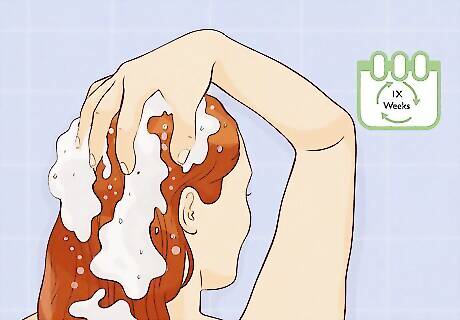
Wash your hair less often. Shampooing your hair every day can not only strip away its natural oils but the color as well. Keep your color fresh by washing every other day, every third day, or even just once a week if your scalp isn’t naturally very oily. If your hair looks dirty, greasy, or limp between washes, use a dry shampoo designed specifically for color-treated hair to soak up excess oil at the roots and add volume. This is particularly important when you want to protect dark or bright shade, like black, purple or green.
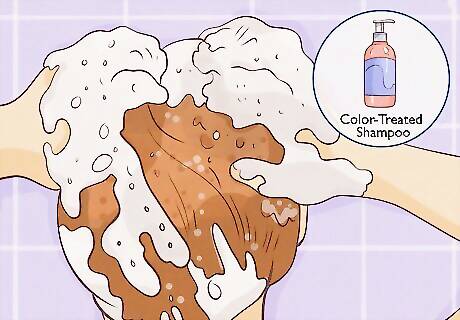
Use a shampoo for color-treated hair. When you do wash your hair, it’s important to use the right product. Opt for a shampoo designed specifically for color-treated hair to avoid stripping the color. The formula should be sulfate-free and contain silicones, which help preserve the color by sealing the cuticle. You may want to use a color-depositing shampoo for color treated hair. Not only does it work to prevent the dye from fading, it actually contains color that it leaves behind on the hair after you wash to freshen your color in between dye treatments.
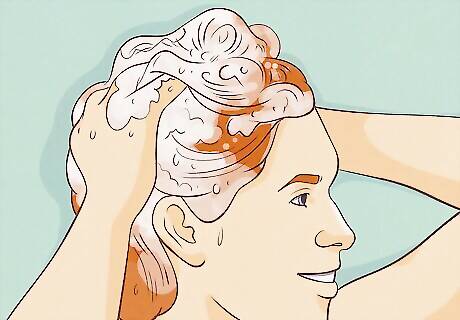
Focus the shampoo at your roots. When you wash your hair, avoid applying the shampoo all over your locks. Instead, concentrate the product at your roots, where your hair is the oiliest, and build up a lather. Once you’ve created a lather at your roots, you can work some of the suds down the length of your hair just before you rinse it out to make sure that it’s all clean.
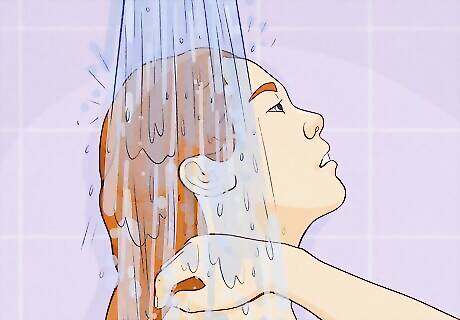
Rinse your hair with cool water after conditioning. Hot water opens your cuticles and may allow color to wash out and cold water closes them. Conditioner, as the last step in the washing process, should be rinsed with cool water so that you can clean and condition your hair and then close the cuticle as fast as possible to minimize color loss. Don’t rinse your shampoo out with cool water, because then you'll close the cuticle before you've gotten the chance to apply the conditioner, making conditioning your hair purposeless.
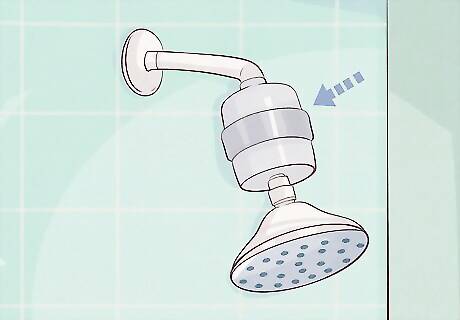
Add a filter to your showerhead. While using cool water to rinse your hair can prolong your color, there may still be minerals in it that strip the dye from your hair. Consider adding a filter to your showerhead to remove minerals such as lime and iron so they don’t ruin your color. A shower filter can also remove chlorine, heavy metals, and soap buildup that may fade your color. If you already have a filter attached to your sink, consider washing your hair in the sink instead.
Moisturizing Color-Treated Hair
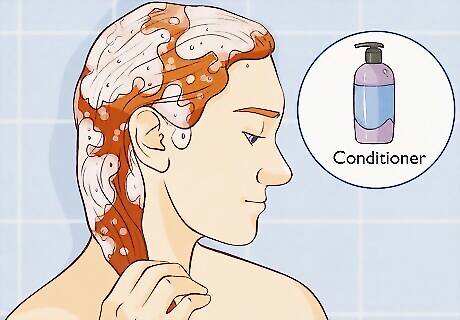
Use a conditioner for color-treated hair. Just as you should use a shampoo for color-treated hair, it’s important to use a conditioner designed to preserve color. Chemical treatments such as coloring can dry out your hair, making it more porous and more likely for the color to leach out. A conditioner for color-treated hair seals the cuticle and helps deliver moisture. Make sure to condition your hair every time that you wash it to ensure that it is properly hydrated.

Deep condition your hair weekly. For color-treated hair, a basic conditioner isn’t always enough. Using a deep conditioner once a week after you shampoo can help moisturize your hair so it stays soft and shiny. It will also help keep your hair color from fading. It's best to use a deep conditioner for color-treated hair. They're designed to prevent your hair color from fading or becoming brassy. Apply your deep conditioner from the roots down to the ends if you have thick or coarse hair. Apply your deep conditioner from mid-strand down to the ends if your hair is fine, thin, or oily. To receive the full benefits, allow the deep conditioner to sit on your hair for at least 10 minutes. Sitting under a heated dryer or putting a shower cap over your hair while the mask is on can help generate heat that allows it to penetrate your hair more effectively.
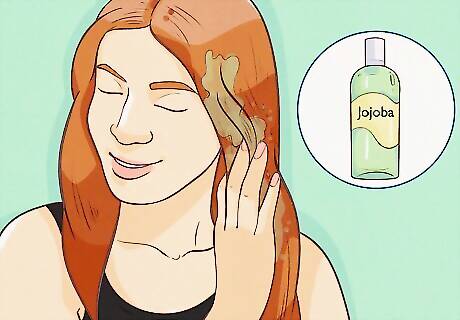
Treat your hair with jojoba oil. Even with regular use of conditioner for color-treated hair and a deep conditioner, your hair may get dry from time to time. Hair oils can help moisturize both dry and wet hair to help preserve the color. Jojoba oil is the best option because it most closely resembles natural hair oils. When applying, keep in mind that a little oil goes a long way. To apply the oil to wet hair, squeeze a small amount onto your palm, rub it between both hands, and carefully smooth it over your hair from the ears down. Use your fingers or a comb to work it through all of your hair. To apply the oil to dry hair, squeeze a pea-size amount onto the tips of your fingers and smooth it just over the ends of your hair. You can substitute coconut oil, argan oil, marula oil, and avocado oil for the jojoba oil if you prefer.
Protecting Your Hair
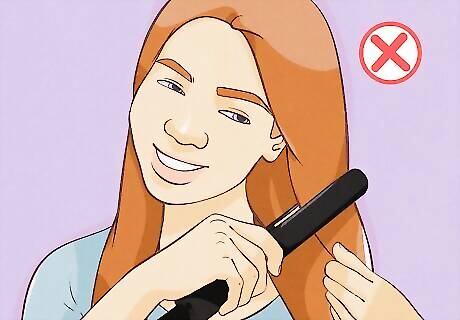
Cut down on heat styling. You may love the way your hair looks when you use your curling iron, flat iron, or blow dryer, but heated styling tools can damage color-treated hair by drying it out further. Try to limit your use of heated styling tools to once or twice a week to keep your color fresh. When you do heat style, always apply a heat protectant product first. It will coat your hair so the heat doesn’t dry out your hair too much. Spray heat protectants are best for thin or fine hair, while a cream or lotion heat protectant works best for thick, coarse, or curly hair. When using a heated styling tool, use the lowest heat setting possible to achieve your desired results.

Use a product with SPF. Just as the sun can damage your skin, it can be harmful to color-treated hair. The UV rays can actually fade your color, so if you’re going to spend time outside, use a protective SPF spray on your hair. Pay special attention to the crown of your hair, which usually receives the most sun. If you’re going to be outside for a prolonged period, wear a wide-brimmed hat to cover your hair for extra protection.
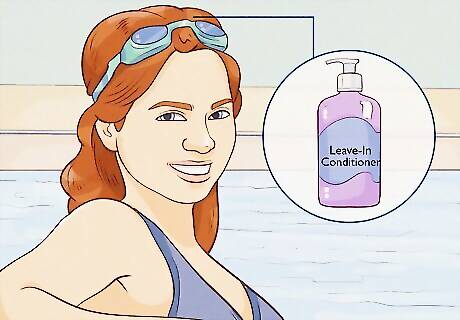
Apply a leave-in conditioner before swimming. The chlorine in pool water and salt in ocean water can be very drying, which means color-treated hair can fade when you go swimming. To protect your hair, spray it with a leave-in conditioner before taking a dip. Not only will it moisturize your hair, it will also help prevent your hair from absorbing as much water. If you don’t have leave-in conditioner with you and want to go swimming, wet your hair with fresh water first. When your hair is already wet, it won’t absorb as much pool or ocean water.
Maintaining the Vibrancy of Hair Color
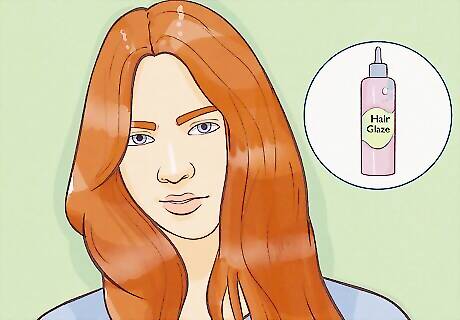
Apply an at-home hair glaze or gloss treatment. Between coloring treatments, using an at-home glaze treatment (also called gloss treatment) can help freshen the look of your hair. The glaze coats your hair to add extra shine and sometimes color that can help revive faded hair. The results typically last for 1 to 2 weeks, so you can use a glaze once or twice between coloring sessions. You can purchase hair glaze treatments at drugstores and beauty supply stores. Most glazes are simply washed into your hair. Apply it after you’ve shampooed and conditioned your hair and allow it to sit for several minutes before rinsing it out.
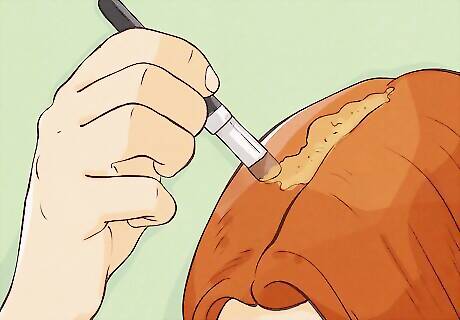
Use a root touch-up kit. If your roots are becoming too obvious between coloring sessions, a touch-up kit can help. They’re like regular at-home color treatment, but contain a targeted brush that allow you to apply the color to precise sections of hair at the roots. If you’re unsure which root touch-up kit to purchase, ask your colorist to help you choose the right one.
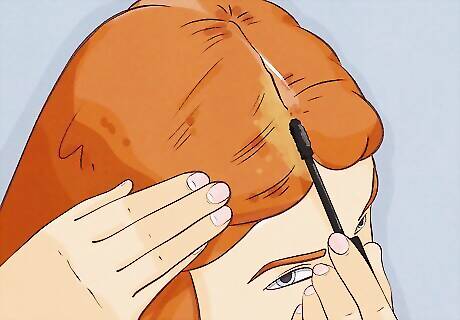
Conceal your roots with hair mascara. If you’re not ready to commit to permanent color with a root touch-up kit, hair mascara is an ideal solution. Like regular mascara, it’s a colored liquid that comes with a small brush so you can apply it directly at the roots. Best of all, it easily washes out with shampoo. Hair mascara tends to work best on darker hair colors.


















Comments
0 comment